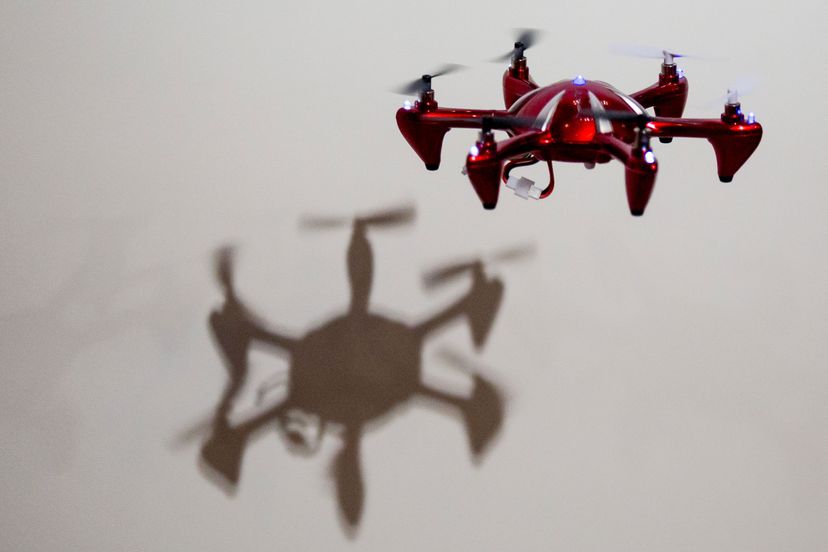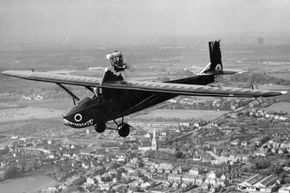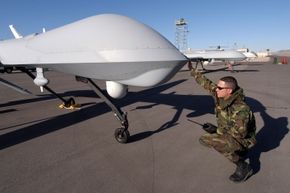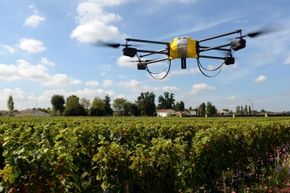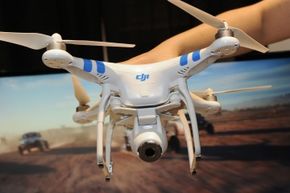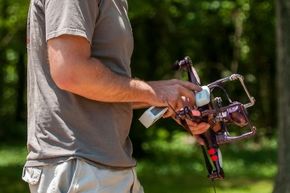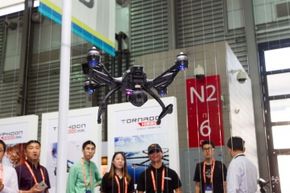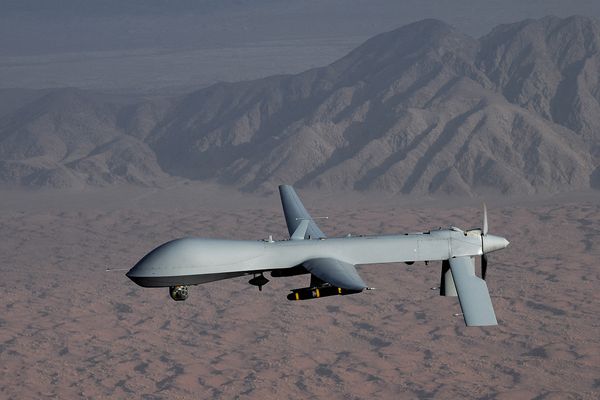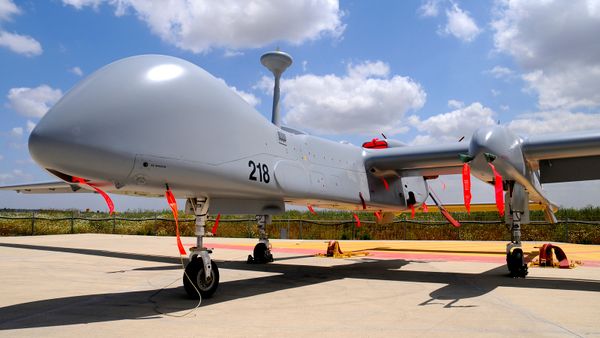Even casual observers realize one striking thing about drones — they often have four propellers (but can have anywhere from three to eight) unlike traditional RC helicopters, which have only one main rotor. Drones need extra rotors because they need more stability to pull off their automated functions.
More rotors also mean more lift. Lift, of course, is the push that spinning propellers create beneath a flying machine. The more lift a device has, the higher and faster it can go, and the more weight it can carry. That last part is vital for anyone who wants to attach a camera to a drone. Too little lift means a drone will moan and groan and crash — or maybe never get airborne at all.
There's a reason that most consumer drones don't get much more than 15 to 20 minutes of flight time, and that reason is related to power. Drones need batteries to power their props. A couple of lightweight rechargeable batteries suffice for a short amount of time in the air. Adding more (or more powerful) batteries is a great idea ... until you realize the extra weight they add can reduce overall flight time.
As power flows from the batteries to the rotor motors, the propellers begin to spin, and it's the spin of each prop relative to the others that changes altitude and direction. Rev up the rotors and they'll generate enough lift to overcome the force of gravity, zipping the drone higher and higher.
If you want the drone to tilt on one side, two of the rotors will begin spinning faster on one side, creating more lift. In doing so, some of the upward lift becomes more of a sideways force, causing the drone to move forward or backward. In the same manner, different prop speeds will spin the drone.
Obviously, you don't have to think through these processes as you're flying your drone, otherwise you'd probably crash it every 10 seconds. Drones are loaded with accelerometers and gyroscopes that help them maintain their orientation in space. These instruments detect linear acceleration, tilt and other directional cues to keep them from dive-bombing the ground — or worse — unsuspecting bystanders.
Many drones also have integrated GPS so the machine "knows" where it is. Command the drone to hover in one small space and it will do so, fighting a breeze if necessary.
To input your commands, you need a controller, typically one that uses 2.4 gigahertz radio waves. Many drone controllers look just like RC controllers of yore — that is, a boxy unit with two thumb joysticks and a collapsible antenna. Others rely on a combination of 2.4 gigahertz signals and WiFi, and they may pass on an old-school controller for one that looks more like a gamepad. They may even rely on a control app on your smartphone or tablet.
The act of flying consumer drones ranges from pretty easy to fiendishly difficult. Cheaper drones are budget-friendly but may be so difficult to fly (and so delicate) that they're broken before you can figure out how to make them travel in a straight line. Pricier drones often have some automatic functions, like landing assistance, that help simplify some of the harder and riskier portions of flights, easing you into your new role as a pilot.
